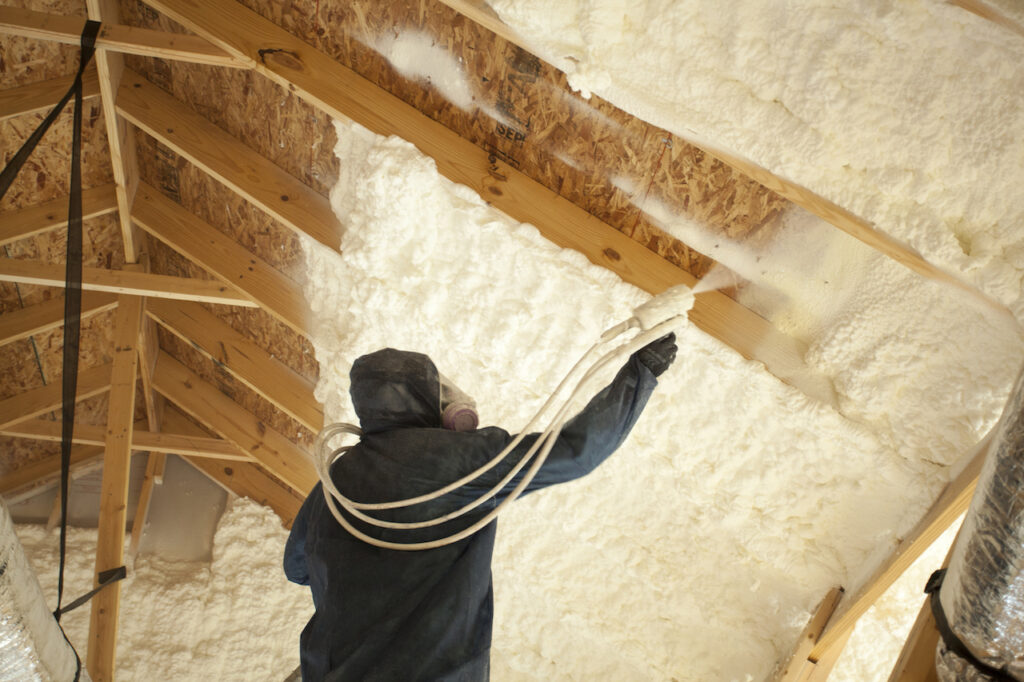Proper insulation is crucial in maintaining year-round indoor comfort, especially in a region like Texline, TX, where extreme temperature fluctuations are common. Whether it’s the scorching summer heat or the chilly winter winds, the right insulation can drastically improve energy efficiency and overall comfort in both residential and commercial spaces.
In this guide, we’ll explain how insulation impacts indoor comfort and energy savings, and why making the right choices for your insulation needs in Texline is critical. With years of experience in providing insulation solutions, Flatland Roofing & Insulation offers valuable insights based on first-hand expertise and local knowledge.
How Insulation Affects Indoor Comfort in Texline, TX
Insulation plays a central role in controlling the indoor climate, reducing heat transfer between the inside of a building and the outside environment. In regions like Texline, where summers can be blistering hot and winters extremely cold, having proper insulation allows you to maintain a comfortable indoor temperature with minimal effort from heating and cooling systems.
Temperature Regulation and Energy Efficiency
During the hot summer months, insulation helps to keep the heat outside, preventing the need for excessive air conditioning. In winter, it prevents the cold from entering, keeping heating costs lower. The key benefit is energy efficiency, which not only results in lower utility bills but also less strain on HVAC systems, extending their lifespan.
Types of Insulation Best Suited for Texline’s Climate
In a region with both extreme heat and cold, it’s important to select the right type of insulation. Materials with high thermal resistance (R-value) are essential for year-round comfort. Insulation options such as blown-in cellulose and spray foam are excellent choices, as they effectively seal gaps and provide a continuous thermal barrier.
Impact on Comfort and Humidity Control
Proper insulation also helps control humidity levels inside the home or building. In areas with high humidity, insulation prevents moisture buildup, which can lead to mold growth or discomfort. In dry climates, it helps prevent excessive dryness indoors, maintaining a balanced, comfortable air quality.
Common Insulation Options
Comparison of Insulation Materials
When choosing insulation for a building, several factors need to be considered, including R-value, installation method, and material type. The table below compares some of the most common insulation materials used in Texline, TX, focusing on their pros and cons.
| Insulation Type | R-Value per Inch | Installation Method | Cost | Best Use Case |
| Spray Foam | 6.0 – 7.0 | Spray application | High | Ideal for air sealing and insulation in hard-to-reach areas |
| Blown-In Cellulose | 3.5 – 4.0 | Blown into attic/walls | Medium | Great for attic insulation and retrofit projects |
| Fiberglass Batt | 3.0 – 4.2 | Installed between studs | Low | Common for wall insulation in new builds |
| Rigid Foam Board | 5.0 – 6.5 | Installed between walls or under floors | Medium | Suitable for foundations and exterior insulation |
Each material has its benefits, and selecting the right one depends on your insulation goals, budget, and specific needs of the property.
Insulation R-Value and Its Importance
R-value is the measure of thermal resistance, with higher values indicating better insulating properties. The R-value needed for a particular area depends on climate, local building codes, and the part of the building being insulated. In Texline, where summers can reach above 100°F and winters can dip below freezing, an insulation material with a higher R-value will provide the best long-term comfort.
| Insulation Material | R-Value per Inch | Recommended Minimum R-Value for Texline (Attics) |
| Spray Foam | 6.0 – 7.0 | R-30 to R-38 |
| Blown-In Cellulose | 3.5 – 4.0 | R-30 to R-38 |
| Fiberglass Batt | 3.0 – 4.2 | R-30 to R-38 |
| Rigid Foam Board | 5.0 – 6.5 | R-30 to R-38 |
Choosing insulation with the right R-value ensures your building can handle the demands of extreme temperatures year-round.
Things to Consider Before Making a Decision
When choosing insulation, there are several factors to consider, especially for properties in Texline:
- Climate: Texline experiences significant temperature extremes, so insulation with a high R-value is recommended.
- Installation Costs: Some materials, like spray foam, have a higher upfront cost, but can offer better long-term savings through energy efficiency.
- Property Type: The type of building (residential, commercial, etc.) influences the insulation choice, as different materials may be better suited for different building types.
- Existing Insulation: If you’re retrofitting an older home or building, the current state of insulation may affect your choices.
Before making a decision, it’s essential to evaluate these factors carefully to choose the best insulation for your specific needs.
Services Offered by Flatland Roofing & Insulation
Flatland Roofing & Insulation provides a comprehensive range of insulation and roofing services to improve energy efficiency and comfort. Here’s a brief overview of relevant services:
- Commercial Insulation Solutions: Tailored insulation systems designed to meet the unique needs of businesses, optimizing energy use and comfort for both employees and customers.
- Residential Insulation Services: Installation of various insulation materials in homes to improve energy efficiency, enhance comfort, and reduce energy bills.
- Blown-In Insulation Installation: A fast and efficient method of insulating attics and walls by blowing loose-fill materials like cellulose into the spaces, offering comprehensive thermal coverage.
- Commercial Roof Coating: Protective coatings for commercial roofing systems that enhance insulation, reduce energy costs, and extend the roof’s lifespan by providing a durable weather barrier.
- Metal Roof Restoration: Restoration services for metal roofs, including insulation and protective coatings, to improve energy efficiency, prevent rust, and extend the roof’s service life.
- Loose Fill/Blown-In Cellulose: Environmentally friendly blown-in cellulose insulation, providing excellent thermal performance and soundproofing properties.
- Cellulose Wall Insulation: Insulation made from recycled paper products, offering great thermal resistance and soundproofing in wall cavities, improving overall energy efficiency.
- Dense-Pack Cellulose: A more dense form of cellulose insulation, providing superior insulation for wall cavities and reducing sound transmission between rooms.
- Residential Roofing Services: Roofing installation and repair for homes, ensuring reliable and energy-efficient roofing systems to protect against the elements.
Common Questions
How can proper insulation improve comfort year-round?
Proper insulation helps maintain a consistent indoor temperature, preventing excessive heat in the summer and keeping cold air at bay during winter. This significantly reduces the need for heating and cooling, improving comfort while lowering energy costs.
What is the best insulation for extreme temperatures?
Spray foam insulation offers the highest R-value per inch and is ideal for sealing air leaks, making it a great choice for regions with extreme temperatures like Texline.
How does insulation impact my energy bills?
Insulation reduces the need for heating and cooling systems to work as hard, leading to lower energy bills. Well-insulated homes and buildings maintain a steady indoor temperature, which helps you save money over time.
Is insulation worth the investment?
Yes. Proper insulation can save homeowners and business owners thousands of dollars in energy costs over the lifespan of the building. Additionally, it enhances comfort and extends the life of your HVAC system.
FAQ
What is the best insulation for an attic?
Blown-in cellulose or spray foam are the best options for attic insulation. Both provide excellent coverage and sealing properties, preventing heat from escaping in winter and blocking heat from entering during summer.
How do I know if my insulation is sufficient?
A professional inspection can identify gaps in insulation. If your home or building experiences uneven temperatures, higher-than-usual energy bills, or drafts, you may need more insulation or a higher R-value material.
Can insulation help with noise control?
Yes. Insulation materials like cellulose and fiberglass provide soundproofing benefits, making them ideal for reducing noise in both residential and commercial settings.
How long does insulation last?
The lifespan of insulation depends on the material. Spray foam can last for decades, while fiberglass batt and cellulose may need replacement or reinforcement after 15–20 years.
Ready to Achieve Year-Round Comfort?
Improving indoor comfort through proper insulation can drastically reduce energy costs while maintaining a pleasant environment throughout the year. Schedule a consultation with Flatland Roofing & Insulation today to explore the best insulation options for your property in Texline, TX.
For more information, contact Flatland Roofing & Insulation at (806) 606-6794 or via email at [email protected].
Reviewer:
Daniel Scott has 7 years of hands-on experience in spray foam insulation. He reviewed this article and made practical suggestions to improve how the message addresses both contractors and customers.







